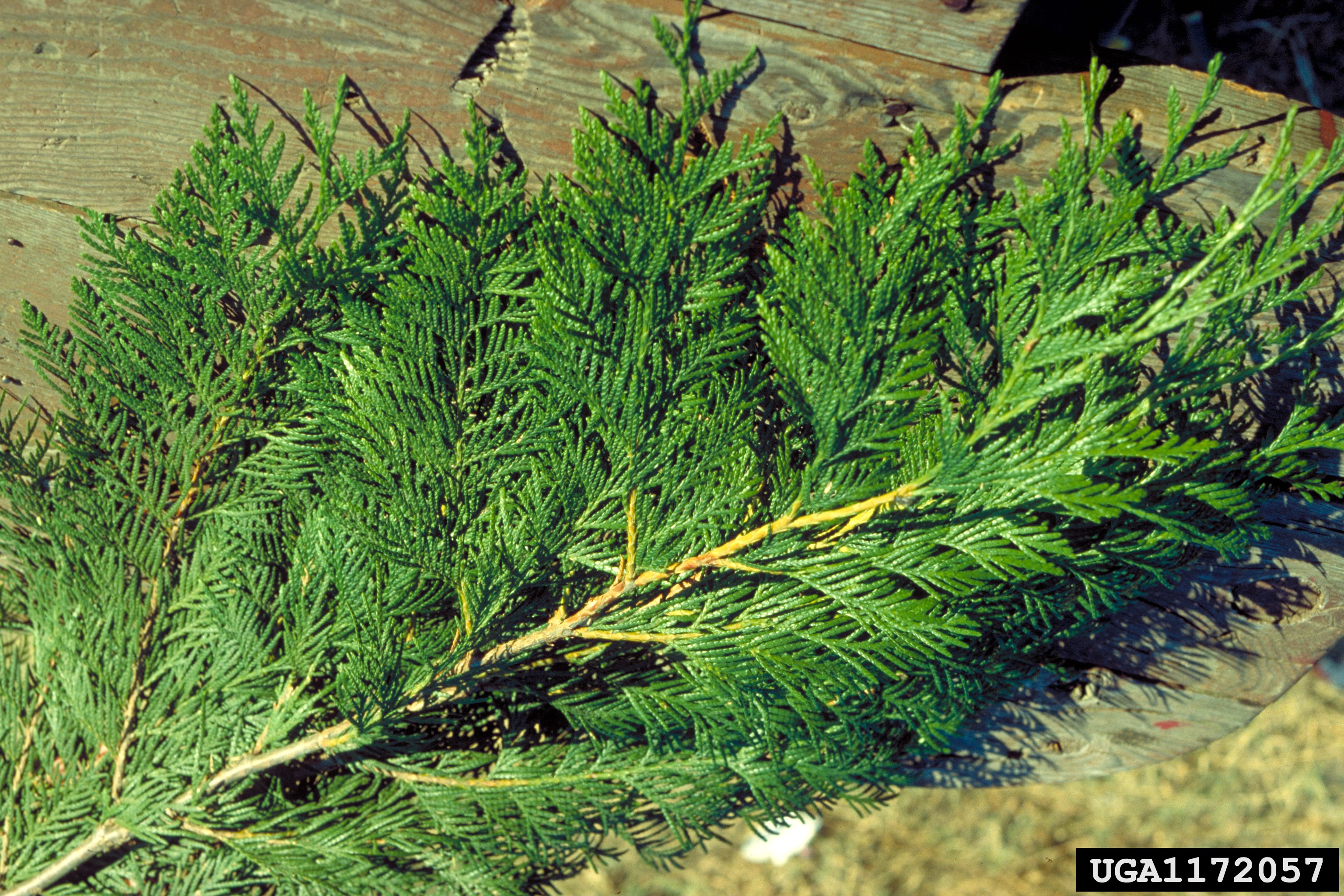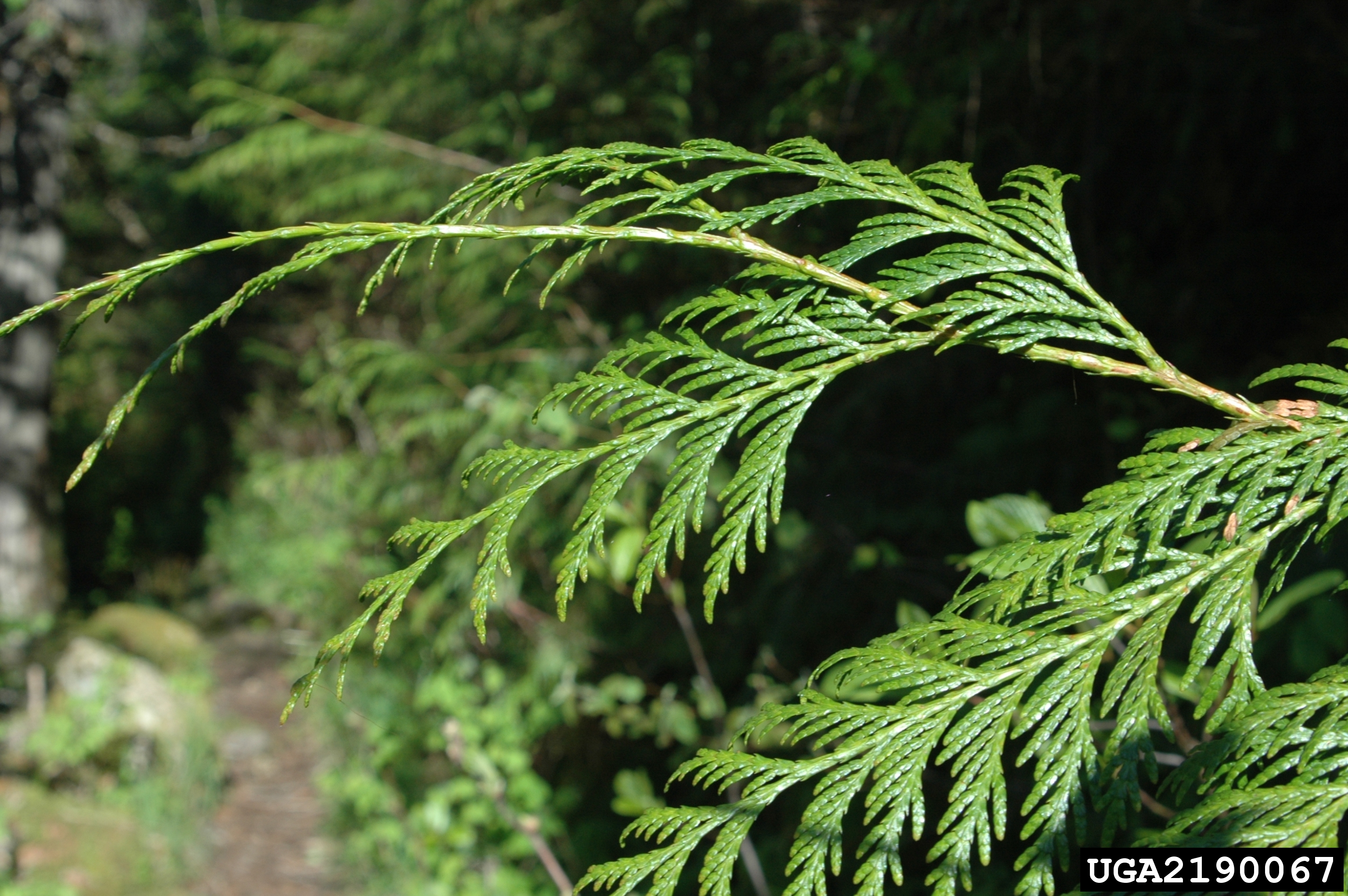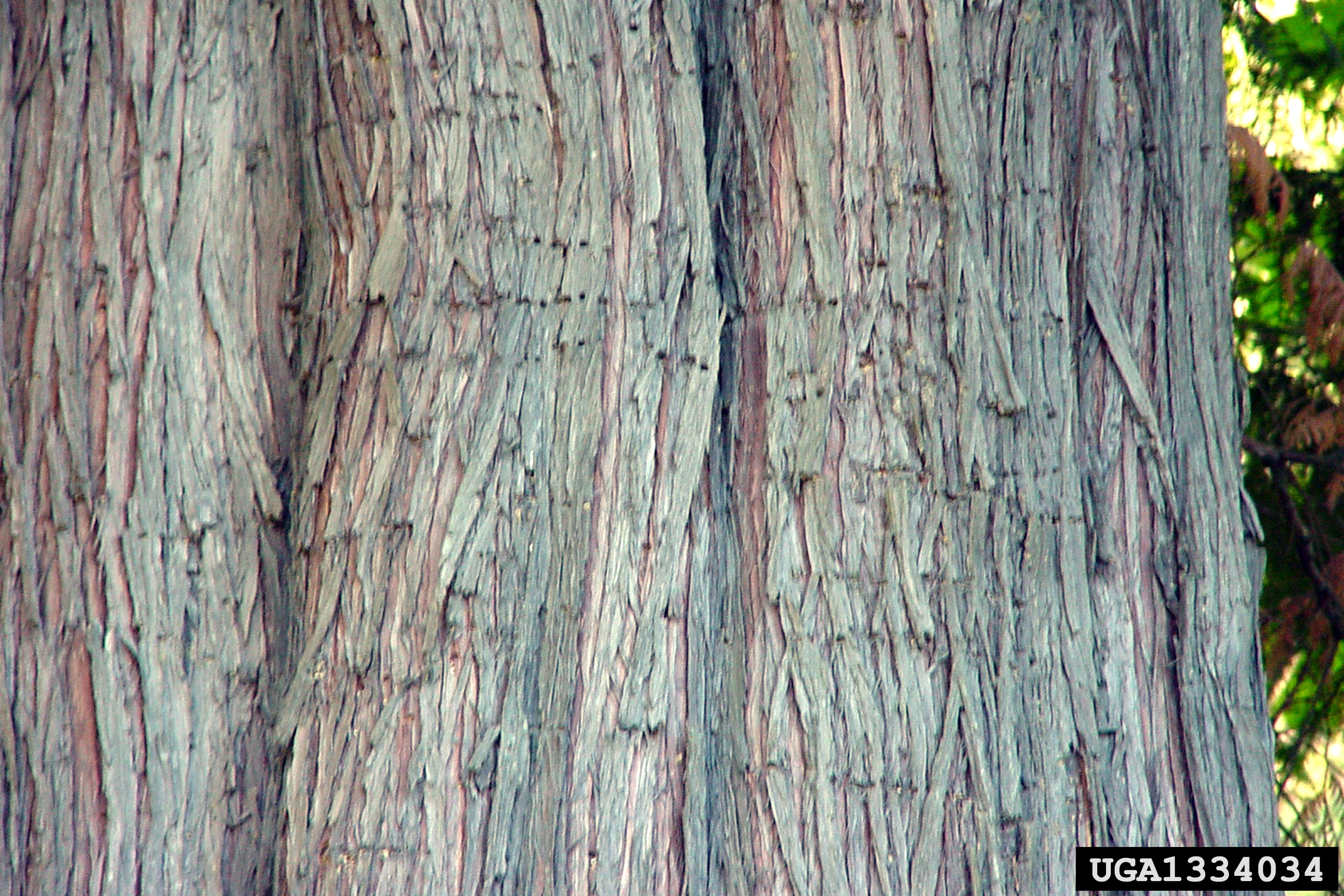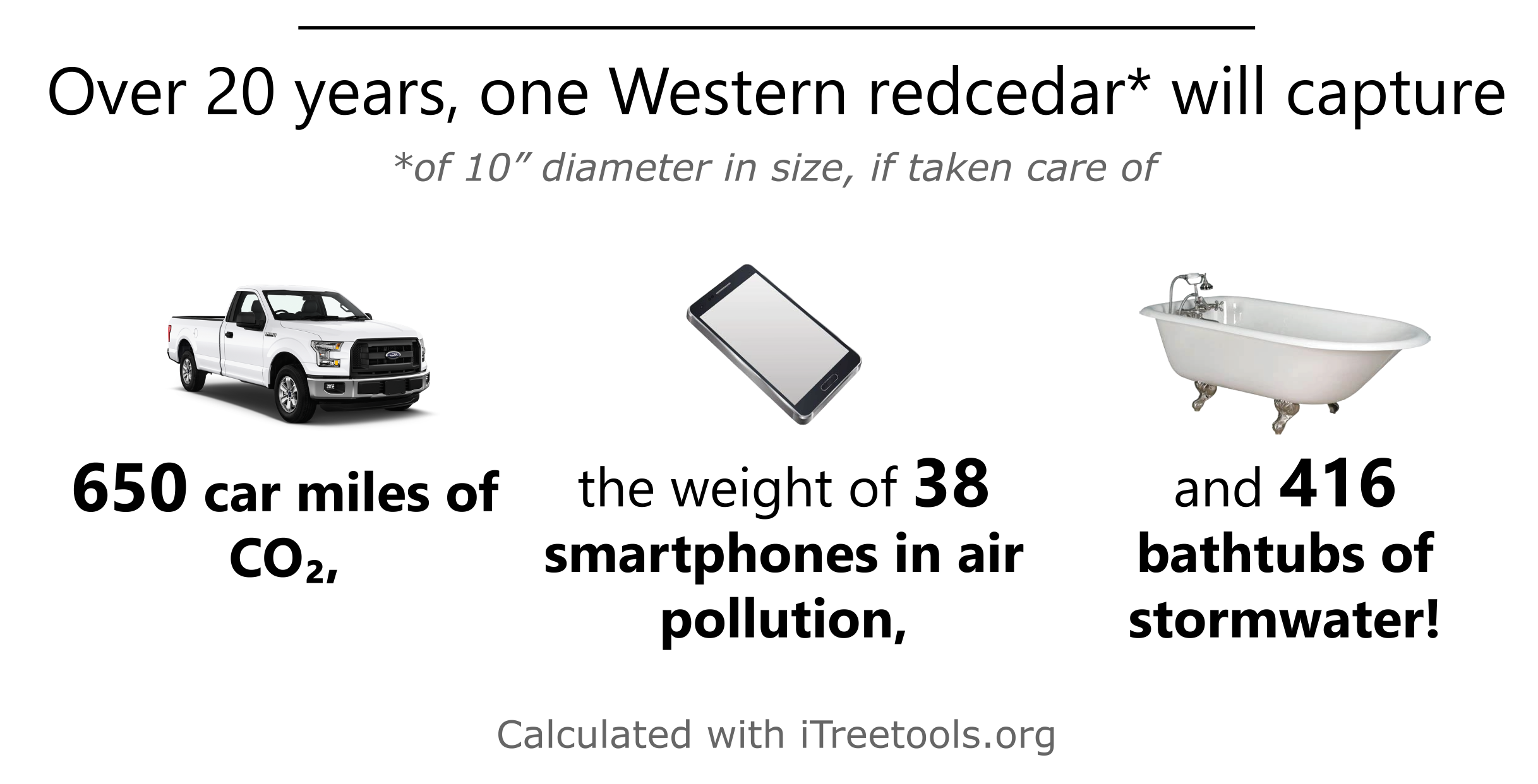Tree Highlight: Western red cedar
Western redcedar
Thuja plicata (Family Cupressaceae)
Western redcedar branch
The basics
The Western redcedar (Thuja plicata), also known as giant arborvitae, is an evergreen coniferous tree in the cypress family that is native to the U.S. Pacific Northwest. However, it is cultivated as an ornamental tree in other regions (but will suffer hot at humid climates!). The Western redcedar can grow up to over 200 feet in the Pacific Northwest but ornamental varieties in parks and gardens are much smaller. The leaves are scale-like and release an intense aroma when crushed.
Did you know?
- In its native range in the Pacific Northwest, this tree can live for over 1,000 years!
- The world largest Western red cedar is the Cheewhat Giant, located on Vancouver Island, and is 182 feet tall!
Western redcedar leaves are small, flat needles
Bagworms spin silk bags on twigs of Western redcedar trees for shelter
Wildlife
- Dense canopies of Western red cedar offer cover to small and medium size animals.
- Many animals use trunk cavities of large trees for cover and nesting, including many birds and small mammals.
- Deer and elk graze on Western redcedar saplings during the fall and early spring.
- Bagworms, caterpillars that live in spindle-shaped silk bags hanging from the tree’s twig, are a common sight on the Western redcedar.
Uses
- The fibrous bark was used by indigenous peoples for making ropes, baskets, and clothing.
- The wood of Western red cedar is very decay-resistant and used commercially for fences, boats, decks, telephone poles, and shingles.
Western redcedar's fibrous bark
Benefits
- Over a 20-year period, a healthy Western red cedar with a diameter of 10 inches will offset 650 car miles worth of CO2, absorb enough stormwater to fill 416 bathtubs, and remove an amount of pollution from the air - in gaseous and particulate form - equivalent in weight to 38 smartphones! Learn more at: https://mytree.itreetools.org/
Contact us: ufi@uky.edu
Images sourced from forestyimages.org





